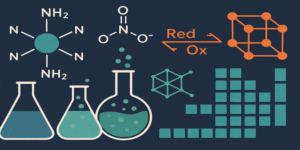Reading is not simply about decoding words but about making meaning from texts. Effective readers actively engage with the material, asking questions, making inferences, and identifying key patterns. The Notice and Note signposts, developed by Beers and Probst (2012), provide a framework for readers to recognise significant textual moments and reflect on their meaning. These signposts include Contrasts and Contradictions, Aha Moments, Tough Questions, Words from the Wiser, Again and Again, and Memory Moments.
This article explores the importance of these signposts in developing critical reading skills, illustrates their application with examples, and considers their role in improving academic success.
Contrasts and Contradictions
The Contrasts and Contradictions signpost occurs when a character’s actions or thoughts deviate from their usual behaviour. Beers and Probst (2012) suggest that these moments prompt readers to ask: “Why is the character doing that?”. This encourages students to make predictions, inferences, and connections to character development.
For example, in Romeo and Juliet, Juliet initially obeys her family’s wishes, but her sudden decision to defy them by marrying Romeo marks a contradiction. Analysing this moment reveals key insights into her personal growth and the play’s central conflict.
According to Cottrell (2019), identifying contradictions helps learners critically evaluate human behaviour and motives, fostering empathy and analytical thinking. Research further supports this: Lupo et al. (2019) found that secondary students who used signpost strategies demonstrated improved inferential comprehension compared to control groups.
Aha Moments
An Aha Moment occurs when a character realises or understands something important. Beers and Probst (2012) advise readers to ask: “How might this change things?”. These moments often reveal themes or turning points in narratives.
For instance, in George Orwell’s 1984, Winston’s recognition of the Party’s manipulation is an Aha Moment that shifts the trajectory of his rebellion. Such moments deepen readers’ understanding of the themes of power and control.
Educational psychology supports the importance of recognising realisations. According to Mayer (2011), metacognitive awareness—thinking about one’s own thinking—is essential for deep learning. Identifying Aha Moments mirrors this process, as readers reflect on the implications of sudden insights.
Tough Questions
The Tough Questions signpost appears when a character wrestles with difficult, often moral, dilemmas. These instances prompt readers to ask: “What does this question make me wonder about?”.
For example, in Harper Lee’s To Kill a Mockingbird, Scout frequently poses questions about justice and morality, such as why people treat others differently because of race. Analysing these questions allows readers to explore issues of ethics, society, and personal responsibility.
According to King (1992), encouraging students to generate and engage with questions leads to deeper comprehension and critical inquiry. Similarly, McNamara (2004) notes that questioning strategies help learners monitor their understanding and make connections between text and prior knowledge.
Words from the Wiser
The Words from the Wiser signpost occurs when an older or more experienced character offers advice to the protagonist. Readers are encouraged to ask: “What is the life lesson, and how might it affect the character?”.
For example, in The Lion King, Mufasa’s advice to Simba about responsibility becomes a guiding principle for his later decisions. These moments often highlight themes or moral lessons within a narrative.
From a pedagogical perspective, recognising mentorship and advice in texts helps students understand how wisdom is transmitted through storytelling. Vygotsky’s (1978) social development theory reinforces this, emphasising the role of guidance and advice in learning. Identifying this signpost allows readers to reflect on their own experiences with guidance and mentorship.
Again and Again
The Again and Again signpost appears when a word, phrase, or idea is repeated throughout a text. Beers and Probst (2012) suggest asking: “Why does this keep showing up again and again?”. This technique often highlights themes, motifs, or foreshadowing.
For example, in The Great Gatsby, the repeated references to the green light symbolise Gatsby’s longing and the broader theme of the American Dream. Identifying these repetitions encourages students to consider how language shapes meaning.
Research in literary analysis supports this approach. Tannen (2007) notes that repetition in discourse is a powerful tool for emphasis and thematic development. By training students to notice such repetitions, educators help them become more attentive and analytical readers.
Memory Moments
The Memory Moment signpost occurs when the narrative is interrupted by a character’s recollection. Readers are advised to ask: “Why might this memory be important?”.
For instance, in Toni Morrison’s Beloved, Sethe’s memories of slavery are crucial in shaping the novel’s exploration of trauma and identity. Such memories provide context, backstory, and emotional depth, helping readers understand the motivations of characters.
Psychological studies confirm the role of memory in narrative comprehension. According to Schacter (1999), personal memories in texts act as cognitive anchors, connecting past experiences to present events. Identifying Memory Moments allows readers to link plot developments with underlying themes.
Academic and Pedagogical Value of Signposts
The Notice and Note signposts are valuable because they equip readers with structured strategies for engaging with texts. Rather than passively absorbing content, students are encouraged to stop, reflect, and ask questions. This aligns with active reading models described by Grabe and Stoller (2011), which emphasise monitoring comprehension and engaging in higher-order thinking.
Educators also report that teaching signposts improves student engagement and independence. According to Fisher and Frey (2015), students who apply these strategies are more likely to transfer reading skills across subjects, from literature to history and science.
The Notice and Note signposts—Contrasts and Contradictions, Aha Moments, Tough Questions, Words from the Wiser, Again and Again, and Memory Moments—provide readers with practical strategies for deeper engagement with texts. By prompting readers to pause, reflect, and question, these signposts transform reading into an active, analytical process.
Their value lies not only in improving literary analysis but also in fostering critical thinking, empathy, and comprehension across disciplines. As educational research and classroom practice demonstrate, the integration of signpost strategies equips learners with the skills needed to navigate both academic texts and broader life challenges.
References
Beers, K. and Probst, R. (2012) Notice and note: Strategies for close reading. Portsmouth, NH: Heinemann.
Cottrell, S. (2019) The study skills handbook. 5th edn. London: Macmillan.
Fisher, D. and Frey, N. (2015) Close reading and writing from sources. Newark: International Reading Association.
Grabe, W. and Stoller, F. (2011) Teaching and researching reading. 2nd edn. Harlow: Pearson.
Haloho, F. (2019) ‘The effect of skimming and scanning technique on students’ reading comprehension in narrative text’, Repository.uhn.ac.id, pp. 45–62.
King, A. (1992) ‘Facilitating elaborative learning through guided student-generated questioning’, Educational Psychologist, 27(1), pp. 111–126.
Lupo, S., Strong, J., Lewis, W., Walpole, S. and McKenna, M. (2019) ‘Building background knowledge through reading: Rethinking text sets’, The Reading Teacher, 73(5), pp. 587–599.
Mayer, R.E. (2011) Applying the science of learning. Boston: Pearson.
McNamara, D.S. (2004) Reading comprehension strategies: Theories, interventions, and technologies. Mahwah, NJ: Lawrence Erlbaum.
Schacter, D.L. (1999) The seven sins of memory: Insights from psychology. Boston: Houghton Mifflin.
Tannen, D. (2007) Talking voices: Repetition, dialogue, and imagery in conversational discourse. 2nd edn. Cambridge: Cambridge University Press.
Vygotsky, L.S. (1978) Mind in society: The development of higher psychological processes. Cambridge, MA: Harvard University Press.









